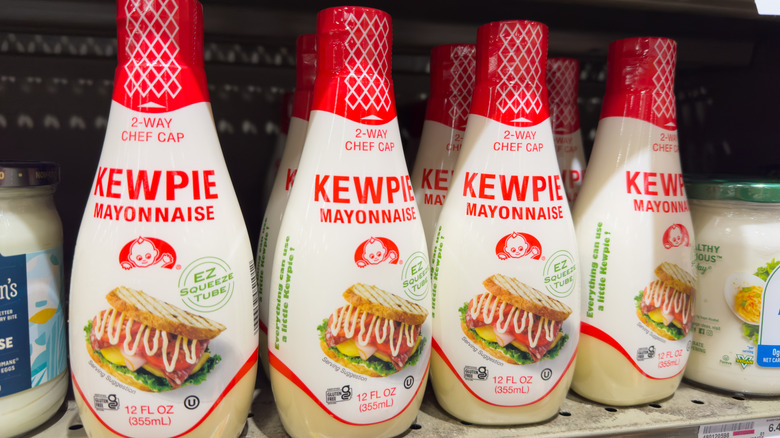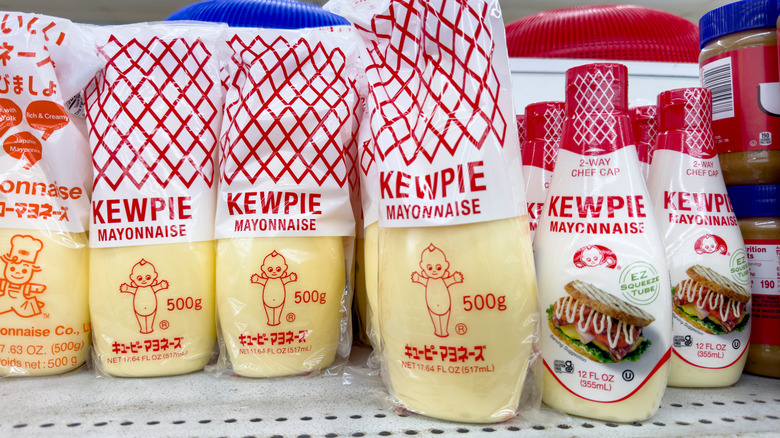That Kewpie Mayo At Costco Isn't Exactly What You Think It Is
It's no secret that we here at The Takeout have been a big fan of Kewpie mayo for years now, which is why we've taken a keen interest in its meteoric rise in popularity throughout the 2020s. A couple years back, Costco made the smart business move of bringing Kewpie mayo into its stores as a permanent fixture.
That's great and all, but recently the internet has begun to notice some discrepancies. Turns out, the Kewpie mayo that's been dominating the Asian market, the one that came to the United States and stole all our hearts — that Kewpie isn't really the same condiment darling you'll find on Costco shelves. Don't get us wrong: It's close, but it's not exactly the same.
For reasons that aren't entirely clear, there are in fact three different versions of Kewpie mayo. There's the original version made in Japan, the version made here in the United States, and yet another version specific to Costco. This isn't just bland business shuffling, either. The ingredients differ between all three, which means each version has its own slight taste variant. The primary offender in both the U.S. and Costco version? Water is the third main ingredient. That could help explain why consumers are complaining that the Costco version tastes watered down.
Costco Kewpie is almost an entirely different condiment
The fact that American versions are watered down isn't the only difference, either. The Japanese-made Kewpie mayo uses rice vinegar whereas the Costco version uses a mixture of distilled vinegar, white balsamic vinegar, and apple cider vinegar.
Granted, it's still the same, and still a decent bottle of mayo for the house, but it does feel a bit like false advertising to label the product as Kewpie mayo when the ingredient list, the taste, and the texture are unlike the version you'd find in Asia. But you don't have to visit "The Kitchen of Japan" to get your hands on the real stuff, since most Asian markets carry the Japanese version.
The issue becomes a little less innocuous when you realize that the Kewpie mayo being sold at Asian markets is often twice the price of the Costco version. The price difference does make sense. For one, it costs money to import products, and especially perishable products like mayonnaise. Second of all, the Costco version is watered down, further reducing the cost of production. And then there's the fact that Costco offers wholesale prices, which cuts the price even further than what an Asian market can do if they want to stay afloat. They simply have a different business model.
But what matters to consumers is the product itself. If you want the authentic version, known to be creamier and more flavorful, you'll just have to cough up the change to buy the real deal.

